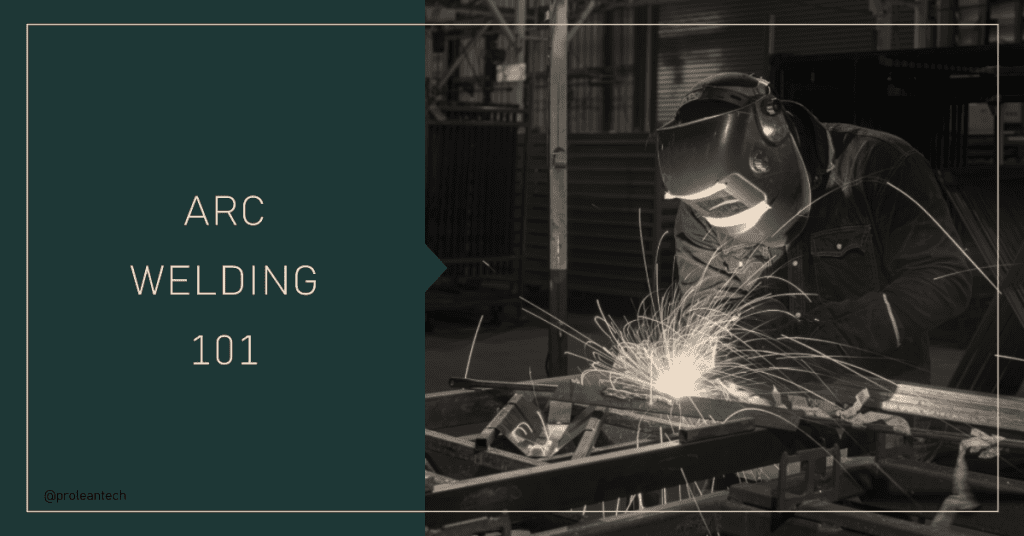
Arc welding has a rich history and has been an integral part of industrial processes for many years. It has undergone significant advancements and introduced new techniques and technologies to better serve various industries. Today, arc welding continues to play a critical role in the manufacturing, construction, and automotive industries, among others. With the right techniques, equipment, and expertise, arc welding can produce consistent and high-quality welds that meet the most demanding specifications.
This article will explore arc welding, covering its evolution, advancements, and techniques used today. By the end, readers will have a good understanding of arc welding and its applications.
Arc Welding Definition and Process
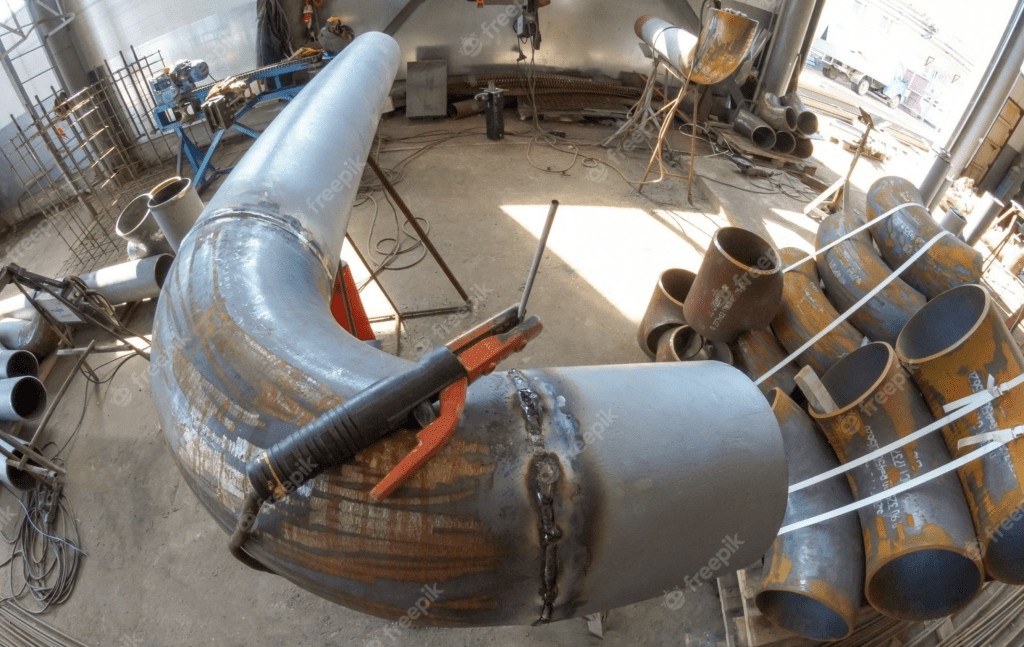
Arc welding process
Arc welding refers to the process of joining two metal materials using an electric arc. The electric arc is formed between the workpiece and an electrode, which is either consumable (melting to form the joint) or non-consumable (not melting). The intense heat generated by the arc melts the workpiece and electrode (if consumable), creating a molten pool that fuses the two materials together. Once the molten pool cools and solidifies, a strong bond is formed between the workpieces, completing the welding process.
The arc welding process requires a power source to generate the electric arc, which can be either a direct current (DC) or alternating current (AC) power supply. The choice of power source depends on the specific welding technique, electrode type, and the material being welded. Additionally, shielding gas or flux may be used to protect the molten pool from oxidation, contamination, and other atmospheric elements that could compromise the weld’s integrity.
Different Types of Arc Welding Techniques
There are several arc welding techniques, each with its unique characteristics and applications. The following are some of the most common techniques:
- Shielded Metal Arc Welding (SMAW): Also known as stick welding or manual metal arc welding (MMAW), SMAW is one of the oldest and most widely used arc welding techniques. It uses a consumable electrode coated with a flux that produces a shielding gas when heated, protecting the molten pool from contamination. SMAW is versatile and can be used for welding various materials, including steel, stainless steel, cast iron, and aluminum.
- Gas Metal Arc Welding (GMAW): GMAW, commonly known as MIG (metal inert gas) welding, utilizes a continuous consumable wire electrode and an external shielding gas, typically argon or a mixture of argon and carbon dioxide. GMAW is characterized by high deposition rates, lower levels of spatter, and the ability to weld a wide range of materials, including steel, aluminum, and stainless steel.
- Gas Tungsten Arc Welding (GTAW): GTAW, or TIG (tungsten inert gas) welding, uses a non-consumable tungsten electrode and an external shielding gas, usually argon. It is known for its precision and high-quality welds, making it ideal for welding thin sheets and complex shapes in various materials, such as stainless steel, aluminum, and titanium.
- Flux-Cored Arc Welding (FCAW): FCAW is a variation of GMAW that uses a tubular wire electrode filled with flux. This technique offers the benefits of GMAW, such as high deposition rates and lower spatter levels, while also providing the shielding properties of SMAW. FCAW is suitable for welding various materials, including steel, stainless steel, and some nickel-based alloys.
Try Prolean Now!
When to Use Arc Welding?
Arc welding is a versatile process that can be used in various applications, including construction, automotive, aerospace, and manufacturing. Some factors to consider when deciding whether to use arc welding include material type, thickness, joint configuration, and desired weld quality. For example, GTAW is an excellent choice for welding thin materials and complex joint configurations due to its precision and high-quality welds. On the other hand, SMAW is a more straightforward and cost-effective option for welding thicker materials and simpler joint configurations.
Applications
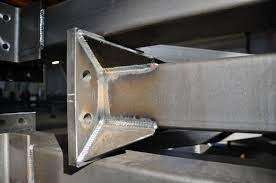
Arc-weld on the structural component
Arc welding is used in a wide range of industries for various applications, including:
- Construction: Arc welding is a crucial process in the construction industry, where it is used for fabricating and joining structural components made of steel or other metals. It is commonly employed in the construction of buildings, bridges, highways, and other infrastructure projects. Arc welding ensures strong and durable connections, contributing to the structural integrity of these projects.
- Automotive: In the automotive industry, arc welding is widely used for manufacturing and repairing vehicle components. It plays a vital role in the assembly of automotive frames, body panels, exhaust systems, and other metal structures. Arc welding techniques, such as MIG and spot welding, are employed to create secure and reliable welds, ensuring the safety and longevity of the vehicles.
- Aerospace: Arc welding techniques, particularly Gas Tungsten Arc Welding (GTAW) or Tungsten Inert Gas (TIG) welding, are extensively used in the aerospace industry. These techniques provide precise and high-quality welds required for critical components in aircraft manufacturing. From fuselages to engine parts and landing gear, arc welding ensures the integrity and performance of aerospace structures.
- Manufacturing: Arc welding plays a significant role in the manufacturing sector for a wide range of metal products. It is used to join and fabricate metal components, machinery, equipment, and consumer goods. Whether it’s welding steel frames for industrial machinery or creating customized metal products, arc welding provides a versatile and efficient solution in various manufacturing processes.
- Shipbuilding: The shipbuilding industry heavily relies on arc welding for the construction of ships and offshore structures. The welding of steel plates, beams, and sections is essential to create watertight and structurally sound vessels. Arc welding techniques, such as Shielded Metal Arc Welding (SMAW) and Flux-Cored Arc Welding (FCAW), are commonly employed to meet the demanding requirements of shipbuilding, ensuring the strength and durability of marine structures.
- Automotive: In the automotive industry, arc welding is employed to manufacture and repair vehicle components, including chassis, body panels, and exhaust systems.
- Aerospace: Arc welding techniques, such as GTAW, are used in the aerospace industry to produce high-quality welds for critical components like aircraft fuselages, engine parts, and landing gear.
- Manufacturing: Arc welding plays a significant role in the manufacturing of metal products, including machinery, equipment, and consumer goods.
Tips and Best Practices for Successful Arc Welding
To achieve successful arc welding results, consider the following tips and best practices:
- Choose the appropriate welding technique: Select the most suitable arc welding technique based on the material type, thickness, and desired weld quality.
- Maintain proper electrode and workpiece preparation: Ensure that the electrode and workpiece surfaces are clean and free from contaminants, such as dirt, grease, and oxides, to prevent welding defects.
- Control welding parameters: Properly set and maintain welding parameters, including voltage, amperage, and travel speed, to achieve consistent and high-quality welds.
- Practice good welding techniques: Develop and maintain good welding techniques, such as proper electrode manipulation, consistent travel speed, and correct torch angle, to enhance weld quality and appearance.
- Ensure proper safety measures: Wear appropriate personal protective equipment (PPE), such as a welding helmet, gloves, and protective clothing, and ensure proper ventilation to minimize health risks associated with welding.
Prolean’s Welding Services: Precision and Perfection
If you are looking for dependable and top-of-the-line welding services, look no further than ProleanTech. Our team of skilled engineers and technicians have years of experience under their belt and are committed to providing you with the best possible results for all your welding needs.
At ProleanTech, we understand that every project is unique and requires a customized approach. Our wide range of arc welding techniques allows us to cater to different industries and applications, from construction to manufacturing. We are equipped to handle any welding challenge that comes our way, and we take pride in delivering high-quality workmanship with the utmost professionalism and expertise.
Our team is not only knowledgeable but also efficient, ensuring that your projects are completed on time and within budget. We also prioritize safety in all our welding processes, so you can rest assured that your projects are in good hands.
Conclusion
Arc welding has come a long way since its inception, with advancements in technology and techniques providing ever-improving results. Understanding the different arc welding techniques, their applications, and best practices is crucial for achieving high-quality welds and efficient project completion. With companies like ProleanTech offering reliable and professional welding services, you can rest assured that your welding projects are in capable hands.
FAQ’s
What is the most common type of arc welding?
Shielded Metal Arc Welding (SMAW) is one of the most common and widely used arc welding techniques due to its versatility and cost-effectiveness.
Which arc welding technique is best for precision and high-quality welds?
Gas Tungsten Arc Welding (GTAW), or TIG welding, is known for its precision and high-quality welds, making it ideal for applications requiring a high level of accuracy and quality.
What are the main differences between MIG and TIG welding?
MIG (GMAW) welding uses a consumable wire electrode and an external shielding gas, while TIG (GTAW) welding uses a non-consumable tungsten electrode and an external shielding gas. MIG welding is generally faster and more straightforward, while TIG welding offers greater precision and control.
How can I improve my arc welding skills?
To improve your arc welding skills, practice good welding techniques, maintain proper equipment and workpiece preparation, and gain experience with various materials and welding processes. Additionally, seeking professional guidance through training courses or workshops can be beneficial in honing your skills.
Is arc welding dangerous?
Arc welding can be dangerous if proper safety precautions are not taken. Ensure you wear appropriate personal protective equipment, maintain adequate ventilation, and follow best practices to minimize health risks and potential accidents.

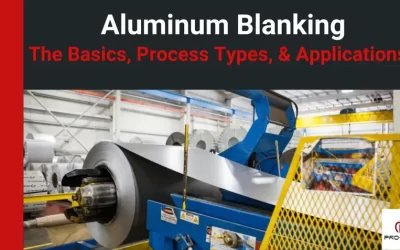
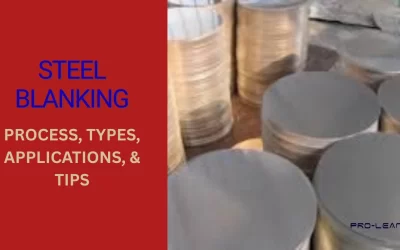
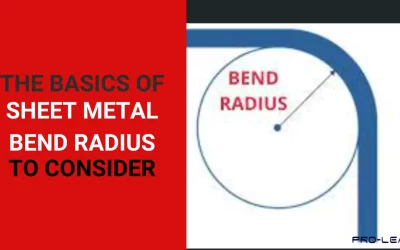
0 Comments